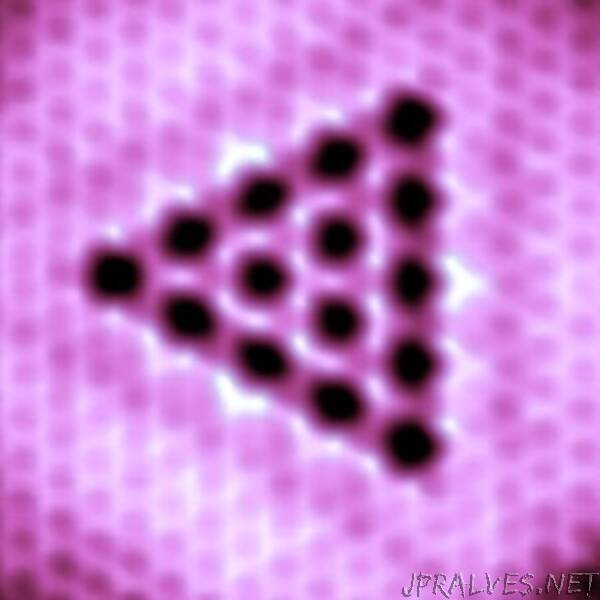
“National University of Singapore (NUS) scientists demonstrated a conceptual breakthrough by fabricating atomically precise quantum antidots (QAD) using self-assembled single vacancies (SVs) in a two-dimensional (2D) transition metal dichalcogenide (TMD).
Quantum dot confines electrons on a nanoscale level. In contrast, an antidot refers to a region characterised by a potential hill that repels electrons. By strategically introducing antidot patterns (“voids”) into carefully designed antidot lattices, intriguing artificial structures emerge. These structures exhibit periodic potential modulation to change 2D electron behaviour, leading to novel transport properties and unique quantum phenomena. As the trend towards miniaturised devices continue, it is important to accurately control the size and spacing of each antidot at the atomic level. This control together with resilience to environmental perturbations is crucial to address technological challenges in nanoelectronics.
A research team led by Associate Professor Jiong LU from the NUS Department of Chemistry and the NUS Institute for Functional Intelligent Materials introduced a method to fabricate a series of atomic-scale QADs with elegantly engineered quantum hole states in a 2D three-atom-layer TMD. QADs can serve as a promising new-generation candidate that can be used for applications such as quantum information technologies. This was achieved through the self-assembly of the SVs into a regular pattern. The atomic and electronic structure of the QADs is analysed using both scanning tunnelling microscopy and non-contact atomic force microscopy . This work is performed in collaboration with Assistant Professor Aleksandr RODIN’s research group from the Yale-NUS College.
The study was published in the journal Nature Nanotechnology on 31 August 2023.
A defective platinum ditelluride (PtTe2) sample containing numerous tellurium (Te) SVs was intentionally grown for this study. After thermal annealing, the Te SVs behave as “atomic Lego,” self-assembling into highly ordered vacancy-based QADs. These SVs inside QADs are spaced by a single Te atom, representing the minimal distance possible in conventional antidot lattices. When the number of SVs in QADs increases, it strengthens the cumulative repulsive potential. This leads to enhanced interference of the quasiparticles within the QADs. This, in turn, results in the creation of multi-level quantum hole states, featuring an adjustable energy gap spanning from the telecommunication to far-infrared ranges.
Due to their geometry-protected characteristics, these precisely engineered quantum hole states survived in the structure even when vacancies in QADs are occupied by oxygen after exposure to air. This exceptional robustness against environmental influences is an added advantage of this method.
Assoc Prof Lu said, “The conceptual demonstration of the fabrication of these QADs opens the door for the creation of a new class of artificial nanostructures in 2D materials with discrete quantum hole states. These structures provide an excellent platform to enable the exploration of novel quantum phenomena and the dynamics of hot electron in previously inaccessible regimes.”
“Further refinement of these QADs by introducing spin-polarised atoms to fabricate magnetic QADs and antiferromagnetic Ising systems on a triangular lattice could provide valuable atomic insights into exotic quantum phases. These insights hold potential for advancing a wide variety of material technologies,” added Assoc Prof Lu.”
